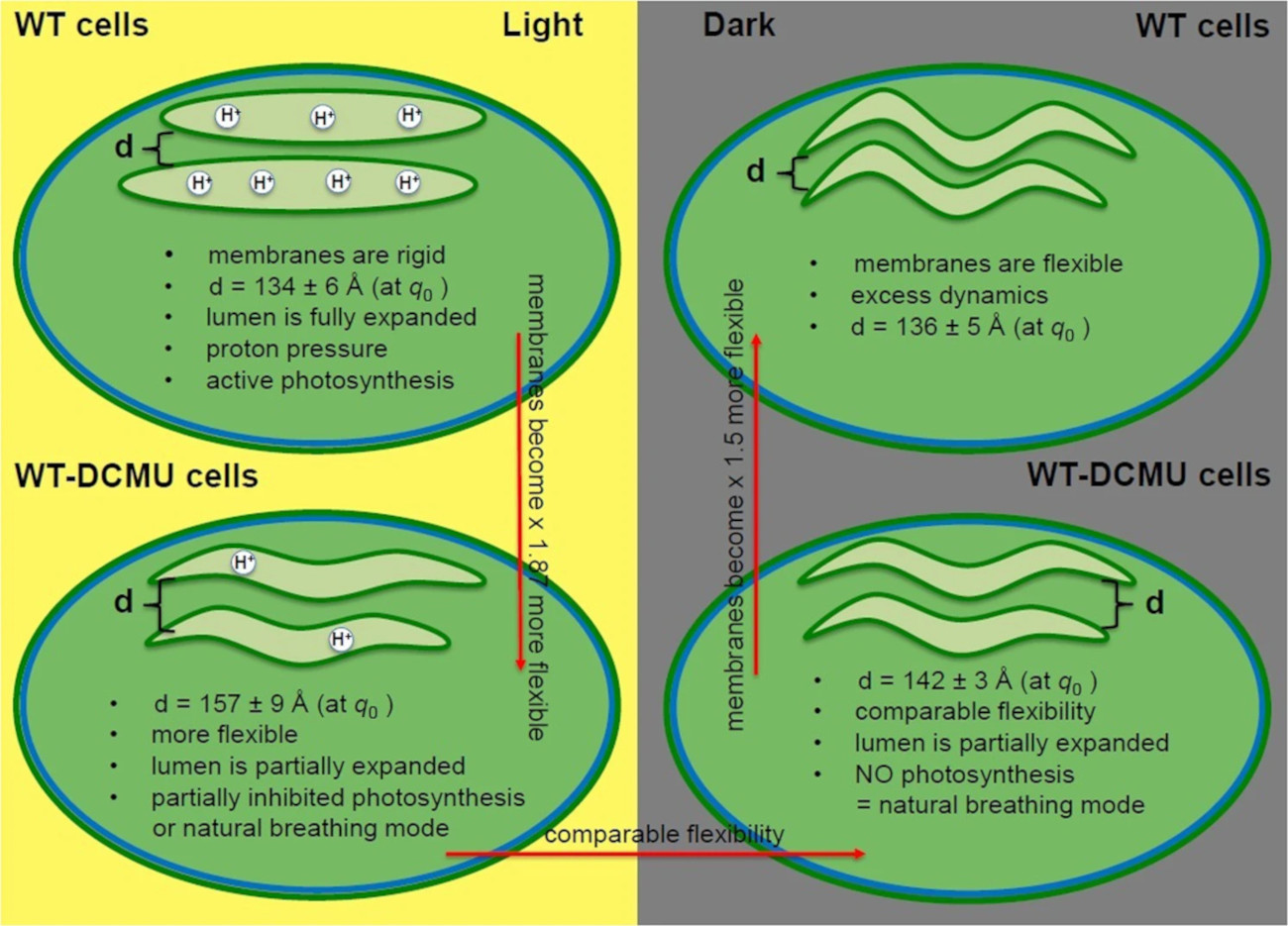Influence of Chemically Disrupted Photosynthesis on Cyanobacterial Thylakoid Dynamics
04/05/2019

The mechanical properties of native and herbicide-treated Synechocystis sp. PCC 6803 cyanobacterial cells under different illumination conditions. The interthylakoidal distance represents the local length scale where thickness and shape fluctuations are sampled. Red arrows show the direction of increase in flexibility. [Image from Stingaciu et al. 2019; available via a Creative Commons license (CC BY 4.0).] Work was performed at the Neutron Spin Echo spectrometer at the Spallation Neutron Source (SNS) and the Bio-SANS instrument at the High Flux Isotope Reactor (HFIR).
The Science
Herbicide treatment effects on the dynamical behavior of cyanobacterial photosynthetic membranes (thylakoids) were measured. Changes in membrane mechanical properties were correlated with their structural organization. This provides an important step in understanding the flexibility of the thylakoids and their active function during energy conversion.
The Impact
This study supports the hypothesis that the proton pressure buildup within the lumenal space during photosynthesis drives dynamical changes in the cyanobacterial thylakoids, that are directly and quantitatively correlated with the mechanical properties of photosynthetic membranes.
The Summary
- Living Synechocystis sp. PCC 6803 cells were studied during alternating light and dark cycles.
- Neutron spin echo spectroscopy measured the dynamical properties of the membranes.
- Small-angle neutron scattering (SANS) measured membrane thickness and spacing.
Related Links
References
Stingaciu, LR., O’Neill, H.M., Liberton, M. et al. “Influence of Chemically Disrupted Photosynthesis on Cyanobacterial Thylakoid Dynamics in Synechocystis sp. PCC 6803.” Sci Rep 9, 5711 (2019). [https://doi.org/10.1038/s41598-019-42024-0]
